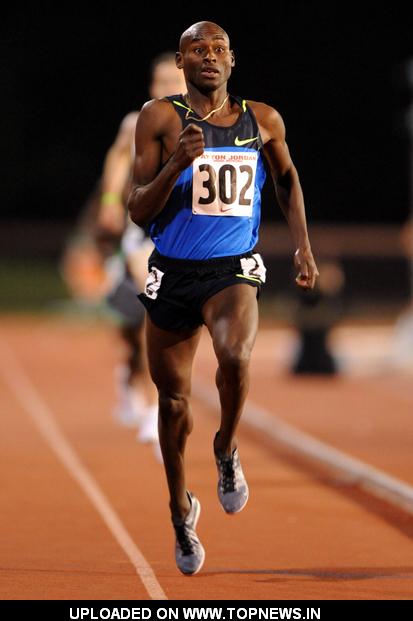
Bernard Lagat trots up the hill from his summer home in the Lustau neighborhood of Tubingen, Germany. He passes apple orchards, fields of potatoes and corn, ripening wheat, a farm selling buttermilk. He enters dense woods, part of the Naturpark Schonbuch. "It's golden in October," he says, growing ebullient the moment his feet touch the moist sand of its trails. A map shows seven different loops. "You can go 13 miles in here and not repeat." A small smile creases his face.
It is an August afternoon last summer, a week before the first round of the 1500 meters in the track and field World Championships in Berlin. The day before, Lagat had gone to a nearby track where he ran a pitch-perfect workout. He clocked one minute and 20 seconds for 600 meters, followed by three 41-second 300s. The times were identical to the training runs he had completed before the last World Championships, in 2007, when he went on to win both the 1500 and 5000 meters. So, based on yesterday's workout, he is heartened. He hasn't lost a step.
Now, amid the beeches, maples, and ash, all he must do is run gently, to get the juices flowing, to allow the previous day's work to take full effect. It's humid, so he sweats even in the cool shade, giving his carefully shaved pate a high gloss. "If I let my hair grow," he chuckles, "I'd still be as bald as a village elder."
When Lagat makes this point, it dawns on a visitor what a startling contrast there is between his youthful potency and his well-disguised age—a contrast few athletes of his stature ever get to achieve. Peter Snell of New Zealand, after winning the Olympic 800 meters in 1960, and the 800 and 1500 in 1964, became a research scientist so as to study his own kind—the great. He found that champion middle-distance men have only been able to endure racing and training at their peak for an average of five years. That was all Snell himself could stand.
Bernard Kipchirchir ("Call me Kip") Lagat is now in his 12th season of being ranked among the finest milers and middle-distance runners in the world. You cannot retrace the Kenyan-born American's magnificent career without crying out, ever more jealously: Just how? How can he still compete at the highest level when his bronze in the 1500 meters in the Sydney Olympics was a decade ago? How can he still be a threat when he ran his best time, 3:26.34, the second fastest 1500 ever, back in 2001? How could he not be sated after he took silver in the 1500 at the 2004 Olympics in Athens? How does he continue to win the Wanamaker Mile, the most famous indoor mile in the world, year in, year out (seven straight and counting), when younger runners with younger legs are chasing him? How on earth did he keep right on after becoming a U.S. citizen and winning the world 1500- and 5000-meter championships in 2007? How does he stay so eager when the champions he battled, including the most notable, Morocco's Hicham El Guerrouj, have long since quit?
True, when Lagat failed to make the 1500 final in the 2008 Beijing Olympics, he looked done at last. Not only that, he had taken on more and more draining responsibilities. He was pushing 34. He had a toddler and another on the way. He had a charitable foundation to look after. His career had to be over.
READ ON...




 ShareThis
ShareThis